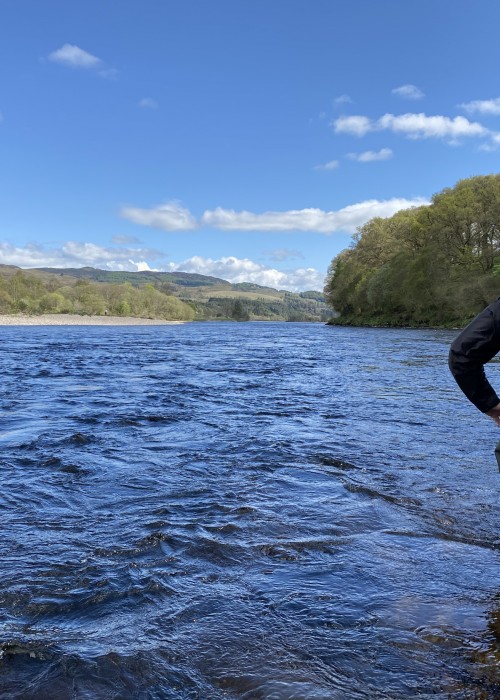
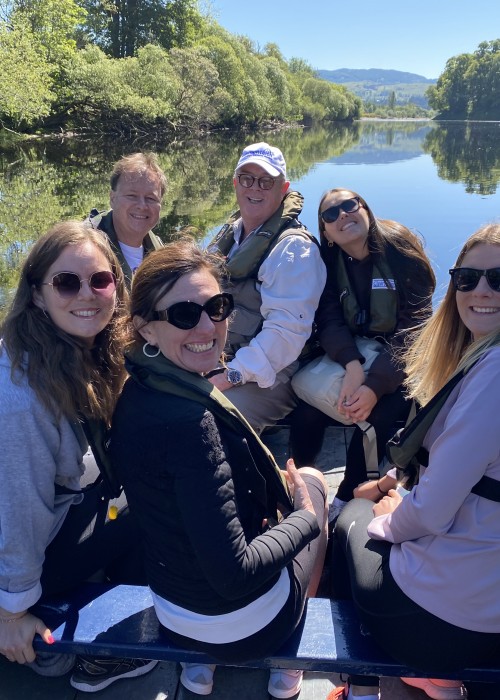
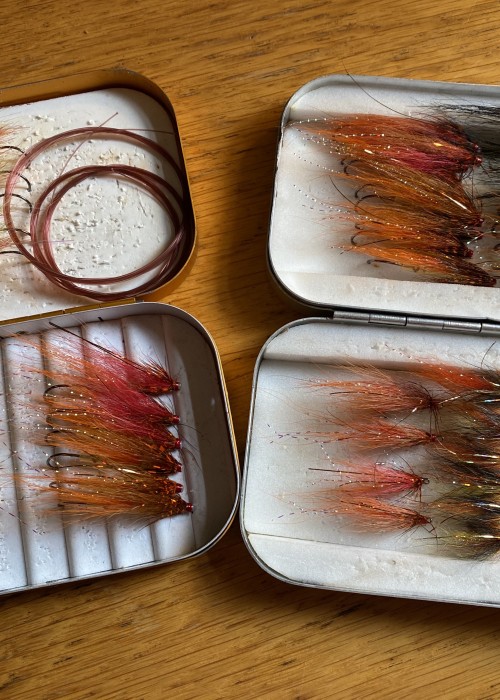
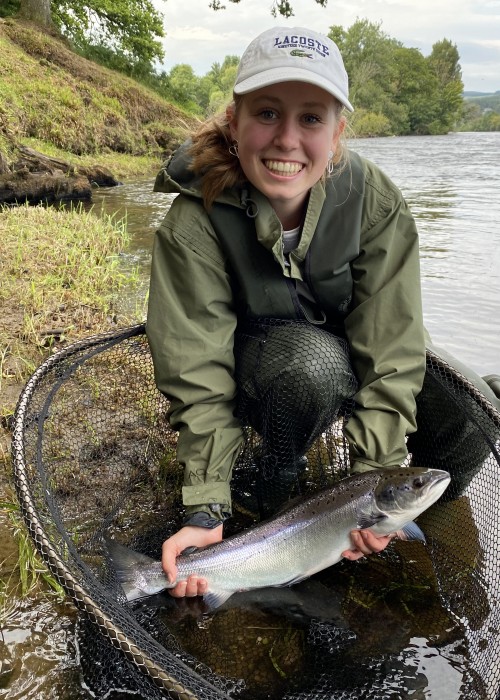
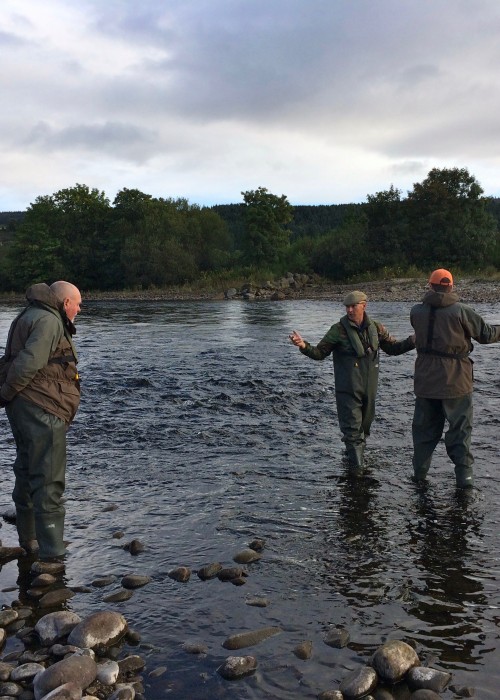
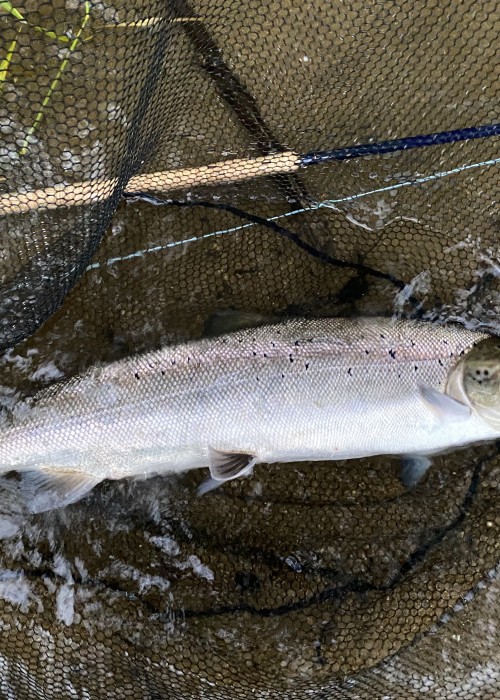
When you book a professional Scottish salmon fishing guide you will be taught how to fly fish with a double handed salmon fly rod and other important fishing skills.
If you want to learn how to fly fish for salmon in Scotland book a professional salmon guide who will teach & fine tune each essential component of the traditional Scottish Spey cast so you understand the logic behind the lift, swing, anchor point & power stroke. Once you have a thorough understanding of the above Spey cast components then you'll be able to self analyse & self adjust (when required) your own performance until the cast becomes second nature. Your professional salmon guide will also teach you other important salmon fishing skills that are vital for success in this fantastic traditional Scottish rural pursuit in addition to providing all of the required salmon fishing equipment (incl. chest waders, life jackets & waterproof jackets).
Once a basic degree of competence has been mastered with a double handed salmon rod then the other skills required are primarily riverbank movement & how to react to the take from a salmon. Riverbank movement while salmon fishing is vital for results as it is effective water coverage that eventually positions your fly in front of a fish during the fishing day. Once you reach that point where a salmon takes your fly it is important to know exactly how to make the take count by hooking the salmon correctly. Many salmon hooking opportunities are squandered in Scotland each year by fishers who don't know how to convert the salmon take into a landed salmon.
Our renowned 'quality assured' guided salmon fishing service is provided on the 4 main big Scottish salmon rivers; Tay, Dee, Spey & Tweed. These 4 major salmon rivers are safer for good fishing conditions than the hundreds of smaller & shallower Scottish rivers that are much more 'recent' rainwater dependent. The River Tay is the most reliable of all as this famous Scottish salmon river has the added benifit of a huge multiple-loch fed headwater catchment that maintains steady water levels throughout the fishing season even during the most low rainfall periods. The above 4 major rivers also benefit from extensive fishing seasons spanning from the earliest opening date of 15 January (Tay) through to the latest closing date of 30 November (Tweed).